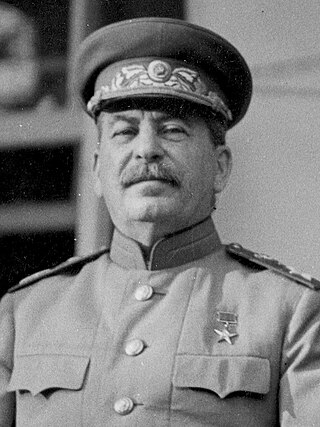
Joseph Vissarionovich Stalin was a Soviet politician and revolutionary who was the longest-serving leader of the Soviet Union from 1924 until his death in 1953. He held power as General Secretary of the Communist Party from 1922 to 1952, and Chairman of the Council of Ministers from 1941 until his death. Initially governing the country as part of a collective leadership, Stalin consolidated power to become a dictator by the 1930s. Ideologically, he formalised his Leninist interpretation of Marxism as Marxism–Leninism, while the political and economic system he implemented is known as Stalinism.

Lazar Moiseyevich Kaganovich, was a Soviet politician and administrator, and one of the main associates of Joseph Stalin. He was one of several associates who helped Stalin seize power.
The "doctors' plot" was a Soviet state-sponsored antisemitic campaign and conspiracy theory that alleged a cabal of prominent medical specialists, predominantly of Jewish ethnicity, intended to murder leading government and party officials. It was also known as the case of saboteur doctors or killer doctors. In 1951–1953, a group of mostly Jewish doctors from Moscow were accused of a conspiracy to assassinate Soviet leaders. This was later accompanied by publications of antisemitic character in the media which talked about the threats of Zionism and condemned people with Jewish surnames. Following this, many doctors, both Jews and non-Jews, were dismissed from their jobs, arrested, and tortured to produce admissions. A few weeks after Stalin's death in 1953, the new Soviet leadership said there was a lack of evidence regarding the doctors' plot and the case was dropped. Soon after, the case was declared to have been a fabrication.
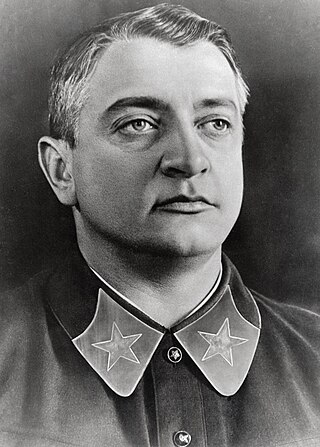
Mikhail Nikolayevich Tukhachevsky, nicknamed the Red Napoleon, was a Soviet general who was prominent between 1918 and 1937 as a military officer and theoretician. He was later executed during the show trials of 1936–38.
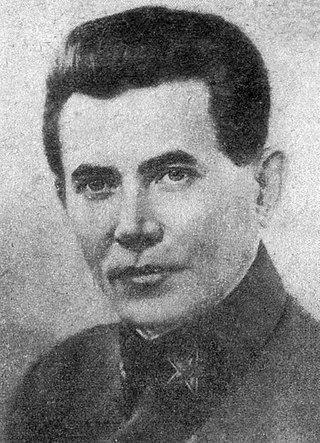
Nikolai Ivanovich Yezhov was a Soviet secret police official under Joseph Stalin who was head of the NKVD from 1936 to 1938, during the height of the Great Purge. Yezhov organized mass arrests, torture and executions during the Great Purge, but he fell from Stalin's favour and was arrested, subsequently admitting in a confession to a range of anti-Soviet activity including "unfounded arrests" during the Purge. He was executed in 1940 along with others who were blamed for the Purge.
Throughout the history of the Soviet Union, tens of millions of people suffered political repression, which was an instrument of the state since the October Revolution. It culminated during the Stalin era, then declined, but it continued to exist during the "Khrushchev Thaw", followed by increased persecution of Soviet dissidents during the Brezhnev era, and it did not cease to exist until late in Mikhail Gorbachev's rule when it was ended in keeping with his policies of glasnost and perestroika.
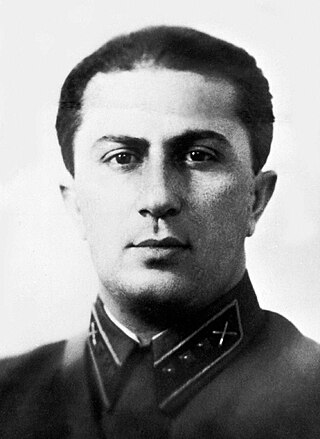
Yakov Iosifovich Dzhugashvili was the eldest son of Joseph Stalin, the only child of Stalin's first wife, Kato Svanidze, who died nine months after his birth. His father, then a young revolutionary in his mid-20s, left the child to be raised by his late wife's family. In 1921, when Dzhugashvili had reached the age of fourteen, he was brought to Moscow, where his father had become a leading figure in the Bolshevik government, eventually becoming head of the Soviet Union. Disregarded by Stalin, Dzhugashvili was a shy, quiet child who appeared unhappy and attempted suicide several times as a youth. Married twice, Dzhugashvili had three children, two of whom reached adulthood.

Alexey Alexandrovich Kuznetsov was a Soviet statesman, CPSU functionary, Lieutenant General and member of CPSU Central Committee (1939–1949).

Simon Jonathan Sebag Montefiore is a British historian, television presenter and author of popular history books and novels, including Stalin: The Court of the Red Tsar (2003), Jerusalem: The Biography (2011), The Romanovs 1613–1918 (2016), and The World: A Family History of Humanity (2022).
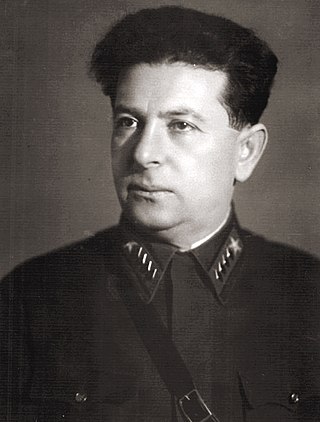
Lev Zakharovich Mekhlis was a Soviet politician and a prominent officer in the Red Army from 1937 to 1940. As a senior political commissar, he became one of the main Stavka representatives on the Eastern Front (1941–1945) during World War II, being involved successively with five to seven Soviet fronts. Despite his fervent political engagement and loyalty to the Communist Party, various Soviet leaders, including Joseph Stalin, criticized and reprimanded Mekhlis for incompetent military leadership during World War II.

Andrey Andreyevich Andreyev was a Soviet Communist politician. An Old Bolshevik who rose to power during the rule of Joseph Stalin, joining the Politburo as a candidate member in 1926 and as a full member in 1932, Andreyev also headed the powerful Central Control Commission of the Communist Party of the Soviet Union from 1930 to 1931, and then again from 1939 until 1952.

Roman Vatslavovich Malinovsky was a prominent Bolshevik politician before the Russian revolution, while at the same time working as the best-paid agent for the Okhrana, the Tsarist secret police. They codenamed him 'Portnoi'.

Alexander Semyonovich "Alyosha" Svanidze was a Georgian Old Bolshevik, politician and historian. He was a personal friend of Joseph Stalin and a brother of Stalin's first wife Kato. Nevertheless, he was arrested during the Great Purge in 1937 and he was shot in prison in 1941.
Alexander Alexeyevich Voznesensky was a Soviet statesman, economist and brother of Nikolai Voznesensky.
Joseph Stalin was the General Secretary of the Communist Party of the Soviet Union's Central Committee from 1922 until his death in 1953. In the years following Lenin's death in 1924, he rose to become the leader of the Soviet Union.

Joseph Stalin started his career as a radical student, becoming a robber, gangster as well as an influential member and eventually the leader of the Bolshevik faction of the Russian Social Democratic Labour Party. He served as the General Secretary of the Central Committee of the Communist Party of the Soviet Union from 1922 until his death in 1953.

Trotsky: A Biography is a biography of the Marxist theorist and revolutionary Leon Trotsky (1879–1940) written by the English historian Robert Service, then a professor in Russian history at the University of Oxford. It was first published by Macmillan in 2009 and later republished in other languages.
Akaki Mgeladze was a Soviet politician. He served as First Secretary of the Georgian Communist Party from 1952 to 1953, and before that was First Secretary of the Communist Party of Abkhazia from 1943 until 1951, as well as previously leading both the Georgian and Abkhazian Komsomol and Gruzneft.

Estimates of the number of deaths attributable to the Soviet revolutionary and dictator Joseph Stalin vary widely. The scholarly consensus affirms that archival materials declassified in 1991 contain irrefutable data far superior to sources used prior to 1991, such as statements from emigres and other informants.
This is a select bibliography of post-World War II English-language books and journal articles about Stalinism and the Stalinist era of Soviet history. Book entries have references to journal reviews about them when helpful and available. Additional bibliographies can be found in many of the book-length works listed below.














